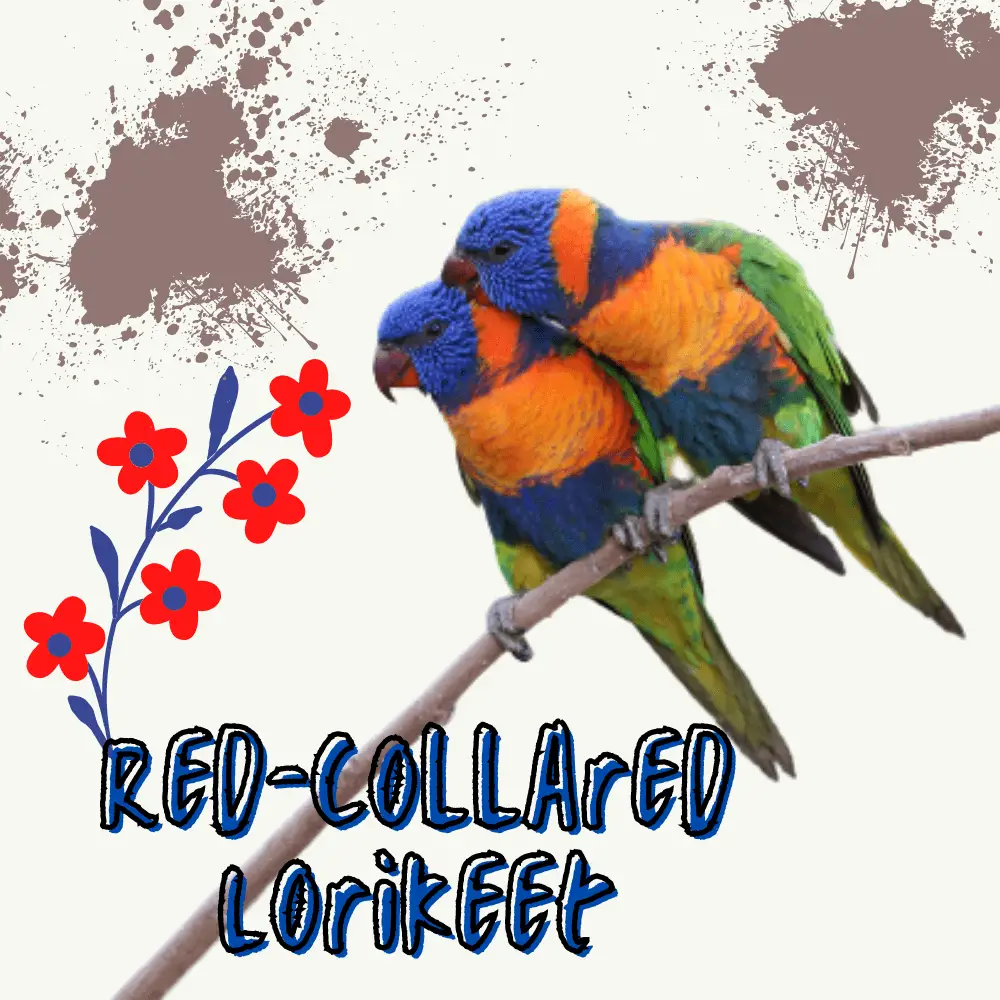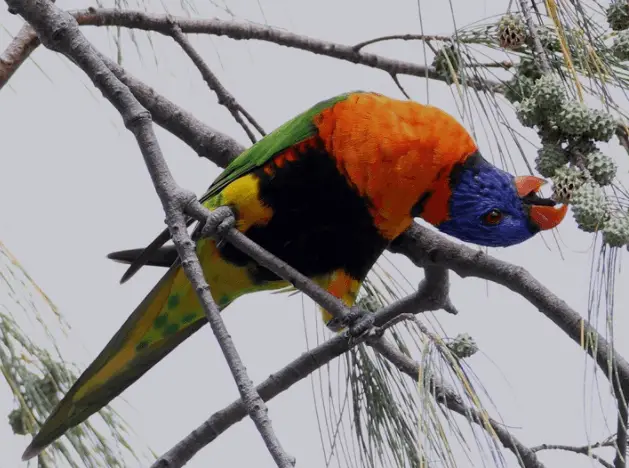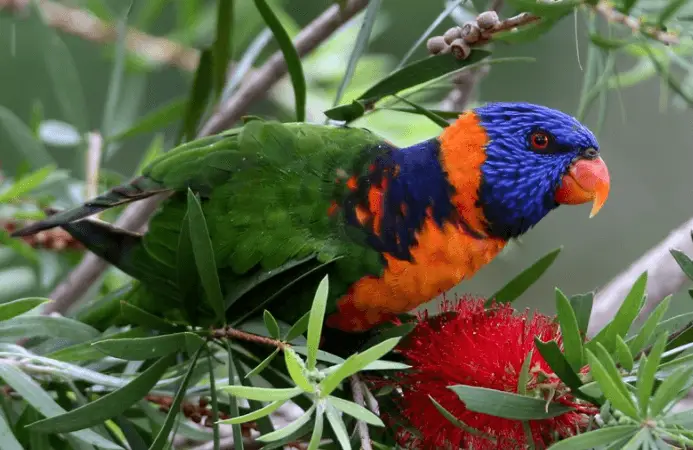
Red-collared Lorikeet 26 cm; 103–140 g; wingspan 46 cm. Previously treated as conspecific with other members of the T. haematodus complex, with which it is in apparently close contact (perhaps overlap), in Australia, with just one, T. moluccanus.
Compared to the latter, rubritorquis is fairly distinct, with a greenish-black (not violet-blue) belly, broad orange-red (not green) nuchal collar, prominent blue band on the mantle (bordered below by orange-red), has more yellow on thighs, vent, and under tail-coverts, and a much broader yellow band on the underside of flight feathers.
Differs in some of the same characters (e.g. color of hind collar ) from T. haematodus, but also lacks barred breast of latter and has paler blue face and head, and more orange underwing-coverts.
Bill orange with a yellow tip, eyes orange-red, and legs and feet grey. Sexes alike. Immature duller than an adult, with less distinct and narrower hind collar, dark brown bill with yellow-orange tip, brown eyes, and yellowish legs and feet.
Systematics History
Occasionally treated in Australian literature as separate species from Rainbow Lorikeet T. haematodus, but this is appropriate only with revision, as here, of the entire Rainbow Lorikeet complex:
Subspecies
Monotypic.
Distribution
N Australia from Kimberley E to the Gulf of Carpentaria; introduced to Kisar, E of Timor.
Habitat
Riverine eucalypt forest and paperbark Melaleuca woodland, as well as swamps, scrub, heath and towns.
Up Close with a Red-collared lorikeet
SOURCE: BIBY TV
Movement
No large-scale seasonal movements are reported and are common year-round at some sites, but there is a certain degree of nomadism in response to flowering events by favored foodplants, e.g. on Groote Eylandt, which congregates on flowering Banksia trees in Apr-May. Often feeds in the company of Psitteuteles Versicolor.

A single specimen from Romang and two from Kisar, in SW Banda Sea, presumably reflect trade during Makassan–Aboriginal interactions, rather than vagrancy to, or former residency on, these islands.
red collared lorikeet Diet

Diet much like that of T. moluccanus, feeding on nectar, fruit, flowers, and insects, including Pandanus spiralis.
In Northern Territory, 94% of 200 observations of feeding involved flowers, e.g. those of Eucalyptus bleeseri (29% of observations of nectar-feeding), E. miniata, E. polycarpa, E. tetrodonta, Melaleuca viridiflora, and Grevillea pteridifolia;
study in Kakadu National Park recorded species feeding on the following additional tree species: Bombax ceiba, Terminalia Grandiflora, Planchonia careya, Amyema sp., Eucalyptus clavigera, E. confertiflora, E. latifolia, E. miniata, E. porrecta, Melaleuca symphyocarpa and Xanthostemon paradoxus.
Red collared Lorikeet Talking
Apparently, this species is similar to T. haematodus and T. moluccanus .
Breeding
Breeding biology is much like that of T. haematodus and T. moluccanus (which see). Season May–Jan in Northern Territory. Egg size 25·7–28·2 mm × 21·1–23·1 mm.
very tamed red collared lorikeet
SOURCE: msmhw
Conservation Status
Not globally threatened. CITES II. One of the commonest parrots within its range.
In Northern Territory, densities of 0·6–1·4 birds/ha in Kakadu National Park, 0·2 birds/ha at South Alligator R, 0·08–4·88 birds/ha on Howards Peninsula and 0·06 birds/ha in Yinberrie Hills.
red-collared lorikeet | random bird videos | Australian birds
SOURCE: shivam mishra





















